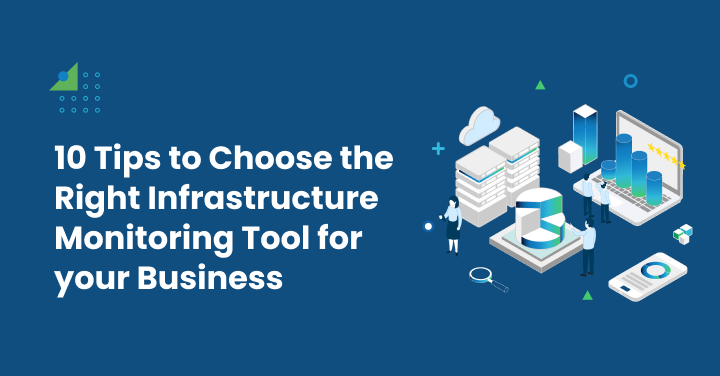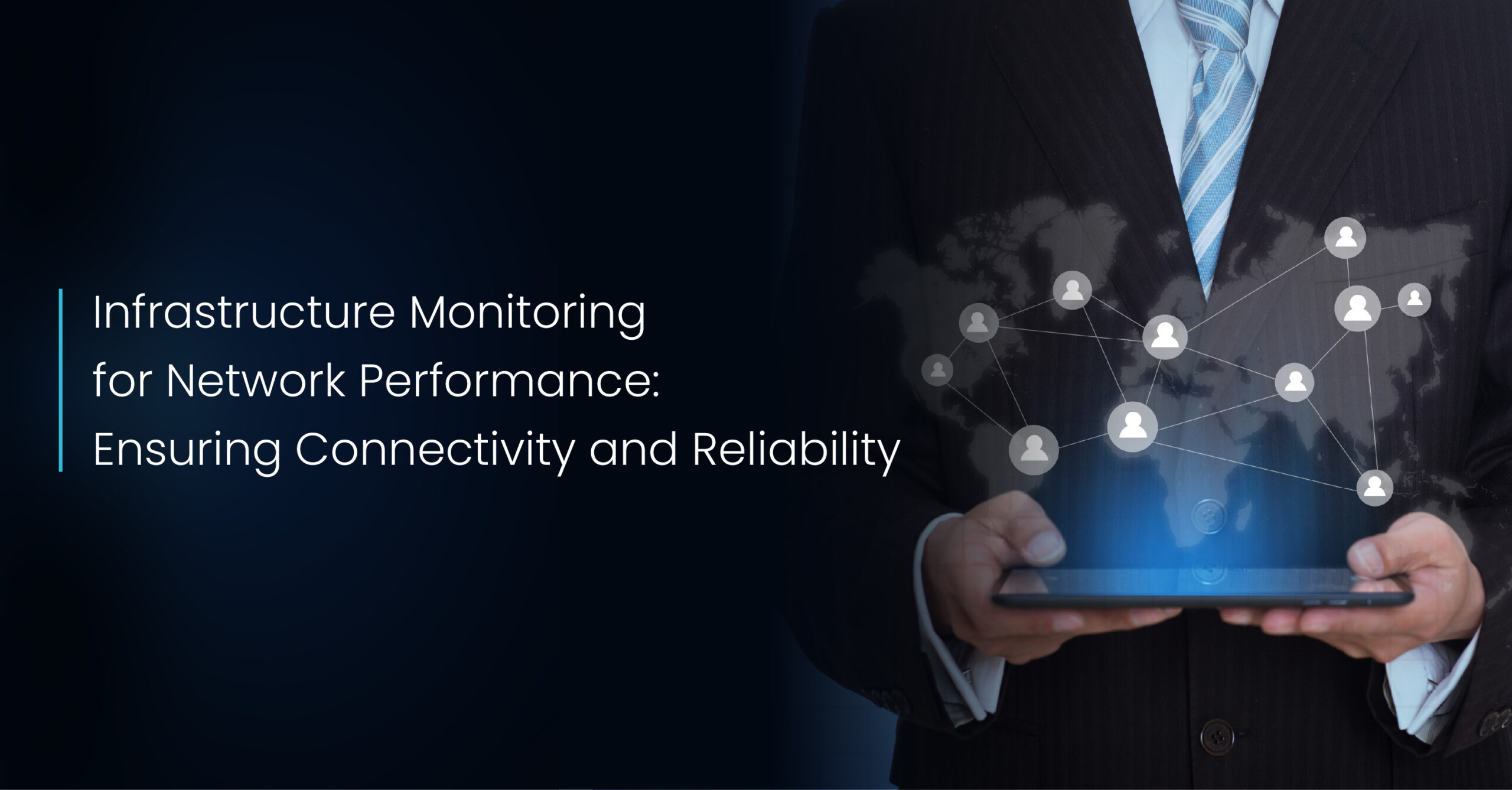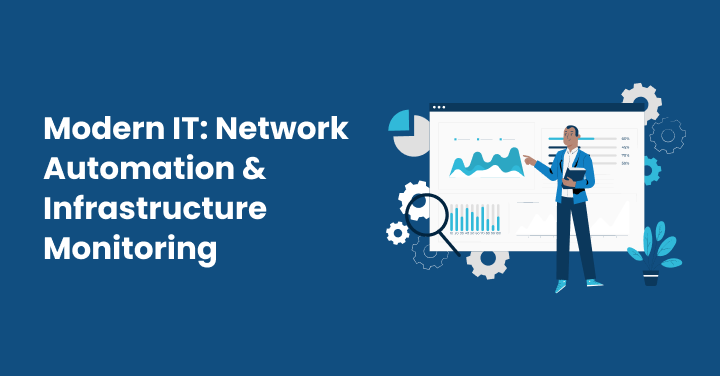Introduction: A New Digital Reality
Imagine you walk into your office on a Monday morning and discover that your internal systems are acting strange. User experience has gone through the roof, files are missing, services are unresponsive, and team members are locked out of essential applications. A few hours later, an unsettling message appears: your data has been encrypted and will only be released for a ransom.
This isn’t a scene from a movie. It’s the unfortunate reality that many businesses face today. As organizations become more digitally connected, the threats they face become more sophisticated and harder to detect. Whether it’s a ransomware attack, insider breach, or zero-day vulnerability, one thing is clear: traditional defenses are no longer enough.
So, what’s the way forward? Strengthening your digital foundation by making infrastructure monitoring a core part of your cybersecurity strategy.
Why Your Infrastructure Is the Real Frontline?
Your IT infrastructure, servers, networks, endpoints, cloud environments, databases is the nervous system of your entire business. It powers everything from customer transactions and employee communication to data storage and application delivery.
But like any complex system, it’s vulnerable. One unpatched system, one misconfigured server, or one overlooked spike in traffic can open the door to significant damage. That’s why protecting your digital environment starts with understanding it.
Infrastructure monitoring software provides continuous oversight of your entire IT systems environment, including hybrid environments and cloud infrastructure across the entire infrastructure components, including offerings like Amazon Web Services.
It watches over your systems 24/7, alerting you to potential issues, anomalies, breakdowns, and suspicious behavior—often before they become full-blown crises. It’s like having a digital sentry, powered by software agents, that never sleeps.
Understanding Cyber Resilience and Threat Detection
Before we dig deeper to the root cause, let’s look at what we mean by cyber resilience and the other use cases.
Unlike cybersecurity, which focuses heavily on prevention, cyber resilience is about being prepared for the worst and knowing how to bounce back quickly.
It includes the ability to detect attacks early, respond effectively, and recover without major disruption.
This shift from prevention-only to detection and response is crucial.
Cyberattacks have become stealthier. Many breach attempts don’t trigger alarms immediately, especially if the attacker remains undetected, gradually collecting data or targeting high-value assets.
That’s where modern threat detection comes in. In addition to perimeter defenses like firewalls and intrusion prevention systems, organizations are increasingly focusing on internal indicators—subtle changes in system performance, unusual traffic patterns, or login behavior that deviates from the norm.
Infrastructure monitoring is central to this approach because it delivers the visibility needed to catch these internal signals.
The Role of Infrastructure Monitoring in Cybersecurity
Let’s explore how infrastructure monitoring actively contributes to threat detection and cyber resilience.
1. Providing a Clear Picture of Infrastructure Health
Real-time monitoring gives you a clear, up-to-date picture of your infrastructure’s health. This includes metrics like CPU usage, memory consumption, disk performance, and network activity, providing real-time insights into performance.
More importantly, it helps you understand what “normal” looks like in your real-time environment.
Real-time monitoring gives you a clear, up-to-date picture of your infrastructure’s health. This includes metrics like CPU usage, memory consumption, disk performance, and network activity. More importantly, it helps you understand what “normal” looks like in your environment.
Once you have a baseline, any deviation from that norm can raise a red flag.
For example, if a server that typically uses 30% CPU suddenly spikes to 95% for no clear reason, that could indicate a resource-intensive process, possibly malware.
2. Anomaly Detection: Spotting the Unusual Before It Escalates
Infrastructure monitoring tools are designed to detect anomalies that might otherwise be missed. These include:
- Sudden spikes in CPU utilization or memory usage null
- Disk I/O that doesn’t align with known activities
- Unusual outbound traffic, especially to unknown or flagged IP addresses
- Unexplained port changes or configuration modifications
Such anomalies can be early indicators of threats like crypto-mining malware, botnet activity, or lateral movement inside your network.
3. User Behavior Monitoring: Watching for Misuse or Malicious Intent
Infrastructure monitoring isn’t just about machines; it’s also about the people who use them. Failed login attempts, privilege escalations, or users accessing sensitive data at odd hours are all events worth investigating.
By correlating user actions with system logs, you can detect both malicious insiders and compromised credentials.
4. Early Malware and Intrusion Detection
Malware often gives off signals before it unleashes its full damage. These can include:
- New, unknown processes suddenly appearing
- High resource usage on idle machines
- Persistent outbound connections to strange domains
- Files being created or deleted in system-critical folders
An infrastructure monitoring tool that includes process monitoring, file integrity checks, and log analysis can detect these signs early.
5. Vulnerability Monitoring: Stay Ahead of the Curve
It’s not always attackers that create the biggest risks. Sometimes it’s outdated systems, missed patches, or misconfigurations that open the door.
A good infrastructure monitoring solution helps identify:
- Unpatched software
- Unsupported OS versions
- Misconfigured firewalls or services
- Unsecured open ports
By catching these issues proactively, you reduce your attack surface significantly.
Essential Features of an Infrastructure Monitoring Tool for Security
Let’s break down the capabilities that truly matter when security risks are the goal.
- Metrics Monitoring: Keep track of performance metrics such as CPU, RAM, disk usage, and network bandwidth.
- Log Management and Analysis: Collect and analyze system logs, application logs, and event logs to uncover patterns in your monitoring data.
- Network Flow Monitoring: Understand who is talking to whom inside your network using tools like NetFlow or sFlow.
- Configuration Change Tracking: Monitor changes in system settings, user access levels, and application configurations.
- Process Monitoring: Keep an eye on the processes running on your machines, especially ones that are resource-heavy or unfamiliar.
- File Integrity Monitoring: Watch critical system files for unauthorized changes.
- Smart Alerting: Get timely, actionable alerts categorized by severity and context.
- SIEM and SOAR Integration: Ensure your monitoring system can plug into broader security tools for faster incident response.
Implementing a Cybersecurity-First Monitoring Strategy
Getting started with a security-focused monitoring approach doesn’t require overhauling your infrastructure. It does, however, require careful planning.
Step 1: Identify Your Most Critical Assets
Not every system needs the same level of scrutiny. Focus first on systems that house sensitive data, provide key services, or are exposed to the public internet.
Step 2: Establish Baselines
Monitor your systems under normal conditions to understand expected behavior. This gives context to future alerts.
Step 3: Define Alerting Rules
Set thresholds for different types of incidents. Use tiers to ensure the most critical issues are prioritized.
Step 4: Integrate with Security Teams and Tools
Make sure alerts are routed to the right people and that your monitoring feeds into your incident response workflows.
Step 5: Review and Evolve Regularly
As your environment changes, so should your monitoring strategy. Review configurations, baselines, and alert settings at least every quarter.
Step 6: Embrace AI and Machine Learning
Modern infrastructure monitoring tools use AI to detect complex threats and reduce false positives. If possible, explore solutions with this capability.
Conclusion: Monitoring as a Security Enabler
In the past, infrastructure monitoring was viewed as a tool for performance tuning or uptime assurance. But today, it has emerged as a powerful weapon in the fight against cyber threats.
By delivering real-time visibility, early warning alerts, and behavioral insights, infrastructure monitoring enables teams to spot risks before they explode into incidents. It’s a proactive, intelligent layer of defense that complements other cybersecurity tools.
In a world where threats are persistent and the stakes are high, investing in infrastructure monitoring software is no longer optional. Partnering with a trusted digital transformation expert can help ensure your monitoring strategy integrates seamlessly with broader operational and technology goals, making it an essential part of securing your digital foundation.
FAqs:
Infrastructure monitoring focuses on system health and performance, while security monitoring targets potential threats. However, when combined, infrastructure monitoring enhances security by revealing hidden indicators of compromise.
No, but they can greatly enhance SIEM performance by providing detailed, context-rich data. Together, they offer a powerful combination of visibility and intelligence.
Every time there is a significant change in infrastructure or workload. At minimum, review and adjust quarterly to ensure accuracy.
Common issues include too many false positives, integration challenges, lack of internal expertise, and resistance from teams unfamiliar with continuous monitoring practices.
While not strictly required, AI and machine learning drastically improve detection accuracy, reduce noise, and uncover complex threat patterns that rule-based systems might miss.







